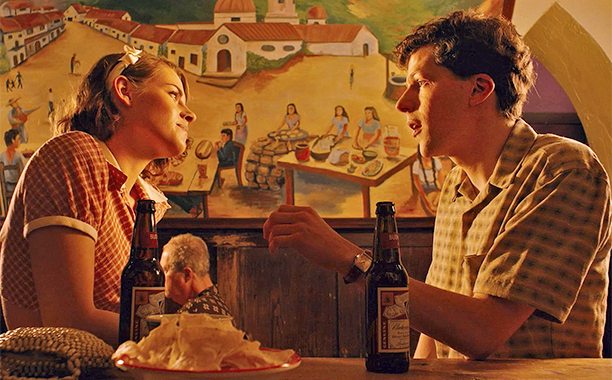
 The more things change, the more they stay the same, and even if in Café Society Woody Allen has traded Sony Pictures for Amazon Studios, and celluloid for digital, this is also one of his most effortlessly romantic films, up there with Manhattan and Everyone Says I Love You. And yet to reduce an Allen film to being a throwback to familiar pieces within his oeuvre would not only be a disservice to his work, but also a failure to grasp that more than being a filmmaker he’s a jazz musician who uses cinema as an instrument, and plot as the melody on which he riffs.
The more things change, the more they stay the same, and even if in Café Society Woody Allen has traded Sony Pictures for Amazon Studios, and celluloid for digital, this is also one of his most effortlessly romantic films, up there with Manhattan and Everyone Says I Love You. And yet to reduce an Allen film to being a throwback to familiar pieces within his oeuvre would not only be a disservice to his work, but also a failure to grasp that more than being a filmmaker he’s a jazz musician who uses cinema as an instrument, and plot as the melody on which he riffs.
In Café Society he uses notes from Alfred Hitchcock's Vertigo to tell the tale of Bobby Dorfman (Jesse Eisenberg) an idealistic New Yorker who moves to 1930s Hollywood to pursue a career with his uncle Phil (Steve Carell) a famous agent to the stars. The only thing that captures Bobby’s attention in Tinseltown is his uncle’s secretary Vonnie (Kristen Stewart) who he falls madly in love with. When family matters call him back to New York, he realizes he’s trying to find Vonnie in the women around him, setting up a cycle of heartbreak that makes one sigh and ache in equal measures.
Impeccably shot by Vittorio Storaro, Café Society feels like Allen’s love song to the city that bore him, and the one that turned him into a legend. He usually reserves his most loving tunes for NYC, but this time he observes Los Angeles with an eye keen on finding nothing but beauty. He places his attention on Mexican-inspired murals in restaurants, deco chandeliers in exclusive nightclubs, majestic furniture in grandiose studio offices. No longer perceiving Los Angeles like the soul-sucking monster he described in Annie Hall, he’s made his peace with the city as a place where creativity can also happen, just to a different beat.
Which is why the scenes set in LA are languorous and decadent, while scenes in New York are snappier, cruder even. The opposing melodies in Café Society make for an otherworldly dissonance, there is something that feels “off” and also absolutely perfect. Many will suggest the way he uses female characters is misogynistic because they seem to be only at the service of his male lead, incidentally another incarnation of the “Woody Allen type”, who’s so neurotic and insecure, you can’t help but wonder who would fall for him. In his two female leads, Allen has found perfect metaphors for what he wants to say about each coast. Stewart representing the cool, completely relaxed vibe of Los Angeles, she’s stunning but doesn’t know it, and Blake Lively encompassing the cosmopolitan allure of New York, she’s also stunning, but has been taught not to rely on it.
When the film arrives to its haunting conclusion it’s clear that the Woodsman has crafted a complex work about the art of decision-making. And finding it impossible to reach a compromise between the head and the heart, he extends a hand to us: we are invited to his dancefloor as long as we’re aware that the orchestra will follows its own beat, just like in life we can dance along, or sit down and wait.